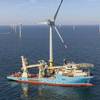What is happening to the average voyage length of crude oil tankers? Tanker market pundits are continuously discussing the reasons for the strength of the market, especially since the world is experiencing only modest demand growth. What are the key drivers for the significant increases in rates?
Some people point out that ton-mile demand has increased as a result of more long-haul crude oil movements, i.e. average distances have increased. These statements are generally based on anecdotal information, so we decided to take a closer look at the reported spot fixture activity in the main crude tanker segments to see if our data supports this statement.
Let’s start off with an important qualifier: our fixture data is good, but it only covers reported spot market fixtures, it does not track all worldwide vessel movements. Nevertheless, we think that reported spot fixtures can be a useful indicator of trends and changes in tradeflows.
Figure shows the development of average distances in each of the major crude tanker segments over the last five years. The data confirms that the VLCCs are employed on the long-haul voyages, while the Aframaxes do primarily shorter trips, with the Suezmaxes somewhere in between.
Starting with the VLCC segment data, we can see some interesting developments. At first lance, the average distances from 2009 to 2015 YTD do not support the notion of longer average distances.
It is difficult to explain the downward trend in average VLCC distances after 2012. The fixture data seems to indicate that while the West Africa to Asia trade keeps growing, there has been a reversal in the VLCC traffic from the Caribbean to Asia (in particular to India).












